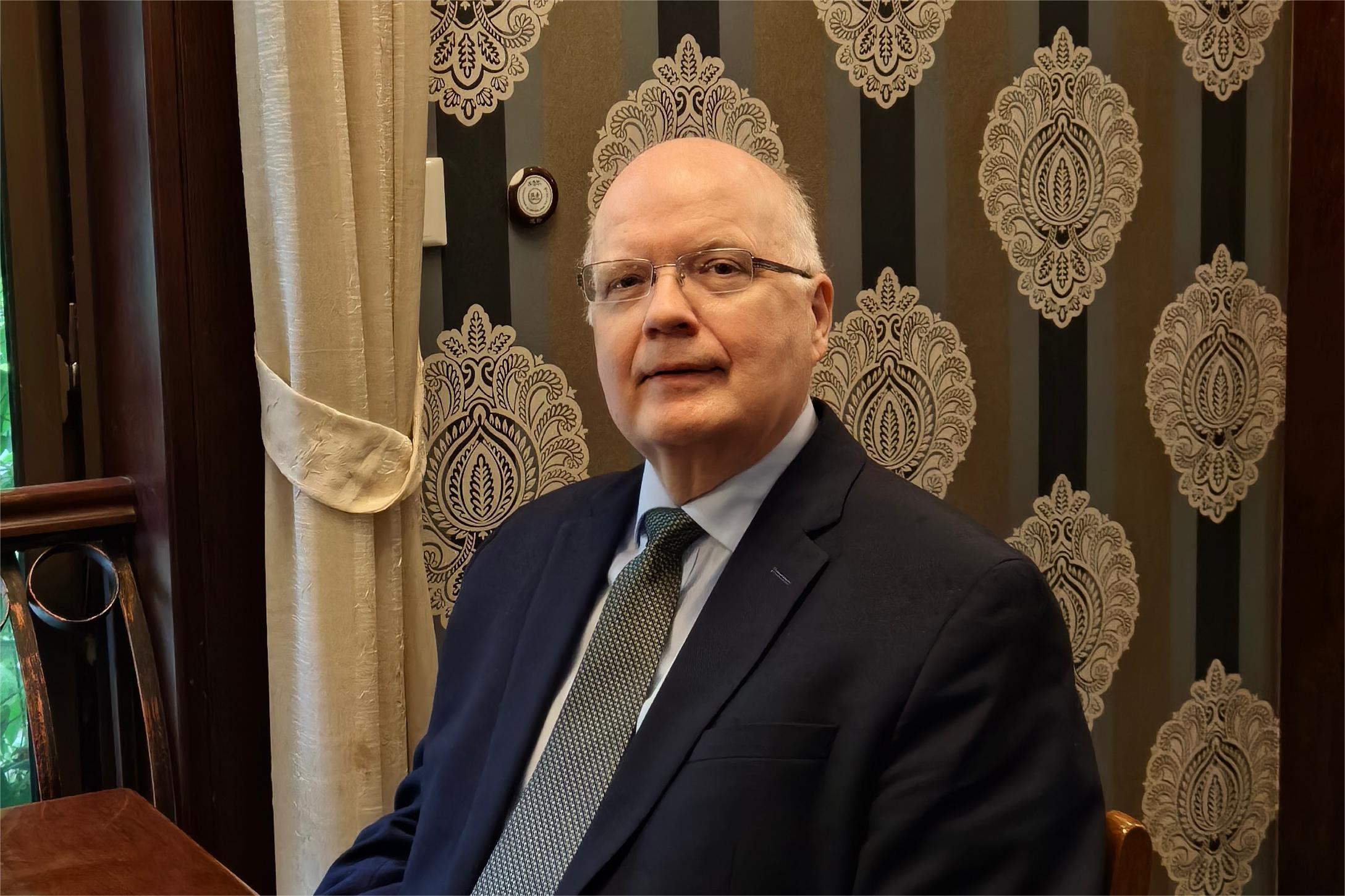By LONG Yun & XU Keqi

Professor Peter Lund. (COURTESY PHOTO)
"A good sci-tech collaboration can be a ladder to solutions for common challenges facing humanity," Finnish scientist Peter Lund said in a recent interview with Science and Technology Daily.
Lund, a Professor of Advanced Energy Systems and Engineering Physics, has long dedicated his time and effort to the research of green and renewable energy at Aalto University in Finland and holds an honorary professorship at Southeast University (SEU) in Nanjing, east China's Jiangsu province.
Childhood dream comes true
His success in the sci-tech field is not accidental, but rather a result of his upbringing in an intellectually stimulating environment that valued innovation and exploration. Born in 1957, the same year the then Soviet Union launched the earth's first artificial satellite, Sputnik I, Lund's early life was filled with the excitement of space exploration.
"This curiosity and drive to discover new things stem from my childhood and influenced my decision to become a scientist," said Lund.
In 1979, at the very beginning of clean energy development, the field was virtually unexplored, providing an exciting and open frontier for this young scientist. "When I started my PhD studies, I was the first person in Finland to work on solar energy. It was thrilling to be in a position where I had to discover everything from scratch," he said.
As his career flourished, Lund's research focused on developing clean energy solutions to replace fossil fuels, primarily with renewable energy. Solar energy has been a major theme in his research. However, as reliance on solar energy increases, it becomes crucial to address its variability, as it is heavily dependent on the weather. Lund emphasized that clean energy technologies are not just about the sources, but also about ensuring energy availability when needed. "Therefore, balancing the energy system to ensure a continuous energy supply is essential," he said.
He also attaches great importance to raising public awareness of the importance of clean and renewable energy. According to Lund, solving energy issues is one of the most central pressures in our society, especially considering the mitigation of climate change, environmental issues, and energy security.
Lund's research not only supports the global transition to sustainable energy, but also advances scientific understanding in energy systems and materials science. "We are a crucial link in the chain of science that leads to solutions," he said.
Science is about cooperation
"Being a part of the solution" is an idea that runs through the interview. Lund firmly believes in the transformative power of international scientific cooperation in addressing global challenges.
"My research field still faces many challenges," he said, adding that, "Science is an open platform where we collaborate with peers in different countries. Each brings their contribution, and together, we find solutions."
As a scientist actively involved in global exchanges for about four decades, he has experienced the benefits of international cooperation firsthand. "Cooperation multiplies resources. It's a leverage to your own research. One plus one in international cooperation is much larger than two," he said.
When faced with common challenges, cultural differences become secondary. "Putting the pieces together through collaboration brings the solution. This shared goal is a highly motivating factor," said Lund.
Learning from China
Reflecting on over two decades of collaboration with China, Lund noted that the country has made a significant leap forward in research, infrastructure, and education. "China has had a very long-term vision, which we see now, and it's been an amazing journey," he said.
According to Lund, his partnership with SEU exemplifies China's dedication to research excellence. The cooperation started with a joint symposium on clean technology organized over a decade ago, in which he got acquainted with Wang Jun from SEU. Since then, he has been amazed by the robust research ecosystem of the university, which he regards as one of his most successful international endeavors.
He lauded China's open innovation system, which efficiently translates research findings into practical applications, and its long-term approach to research funding, characterized by steady and incremental increases over time.
Lund is impressed by the synergy between R&D and industrial improvements in China, emphasizing the country's pivotal role in contributing to sustainable development. "Today, if I recall some numbers, China invests more in R&D as a percentage of its GDP than the entire European Union, which used to be a very large innovation center."
According to Lund, "China's progress in clean and renewable energy has been just amazing. A notable milestone was around the 2008 Olympic Games, which highlighted China's efforts and achievements in renewable energy deployment and development."
On June 22, the Sino-French satellite Space Variable Objects Monitor (SVOM) was successfully launched. Earlier, on May 3, China's Chang'e-6 lunar probe carried France's Detection of Outgassing RadoN to the moon, marking the first collaboration between the two countries in lunar exploration and France's debut in a lunar landing project. This year also celebrates the 60th anniversary of diplomatic relations between China and France, highlighting their longstanding cooperation in space.
Pushing the development of tech innovation is needed to achieve China's goal of becoming a leading sports nation by 2035, as well as becoming a modernized country.